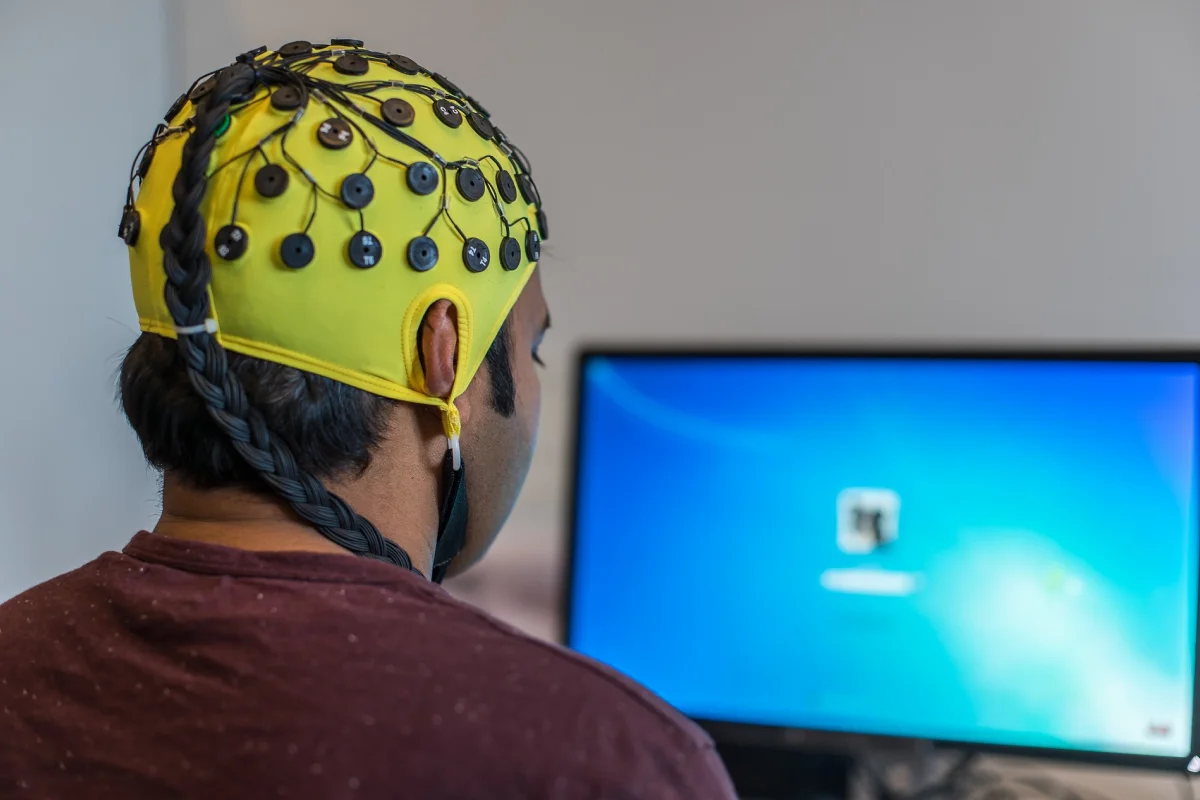
Has your doctor booked you in for an EEG appointment? You might be wondering how it will feel, what happens during an EEG and how long it might last.
Ask your doctor for extra information if you’re feeling uncertain or if you have any concerns.
In this article, you’ll learn more about what an EEG is.
What is an EEG?
An EEG is a method for recording electrical activity in your brain. It is short for ‘electroencephalogram’, and it is one of the ways that doctors diagnose epilepsy.
Your brain is continually producing patterns of electrical activity and an EEG is able to record some of those signals. If the electrical activity follows certain patterns, this might be a sign of epilepsy.
EEG tests are mainly used for assessing seizures or events that look like seizures. They may also be used for helping diagnose other conditions, like dementia.
EEGs are often used to help diagnose epilepsy. Epilepsy is when a person has two or more unprovoked seizures (having a single seizure does not necessarily mean someone has epilepsy). People with epilepsy may have certain kinds of brain activity. If these patterns of brian activity can be seen during the EEG scan, this may help with diagnosis.
What EEG’s do (and do not) show
An EEG shows what electrical activity is happening in your brain at the time of the test. However, if you do not have any epileptic activity during the appointment, the test may come back as ‘normal’. A routine EEG can often be short (around 20-30 minutes), which may partly explain why a scan might not identify epileptic activity.
That does not necessarily mean you don’t have epilepsy. But your doctor will need more information to diagnose your seizures. This might come from:
Everyone’s brain produces ‘waves’ of electrical activity that can be seen on an EEG. But for people with epilepsy, the kinds of waves that happen are often very noticeable. If you have epilepsy, the EEG may record:
- More EEG tests, and longer-lasting tests (potentially including overnight stays in hospital)
- Detailed accounts of your seizures from friends or family (if someone has made a video recording of these events, this can help your doctor with understanding them too)
- Seizure diaries - you can use Epsy to record when and where seizures happened
- Physical examinations
- MRI scans
- CT scans
- Family history
Learn more: What happens in your brain during a seizure?
What happens during an EEG?
When you have an EEG test you will have an appointment with a specialist doctor or technician who is trained to use this technology. The process might vary, but often looks like this:
- The doctor, a nurse or a technician will clean your scalp (the skin on your head)
- They attach electrodes to your scalp using a sticky paste. An electrode is a small round metal disk which can sense electrical activity in your brain
- The electrodes are attached by wires to a machine which shows the electrical activity
- The doctor will then analyze the results
EEG’s do not cause discomfort and the electrodes do not produce any sensation. Your doctor is likely to tell you how to prepare for the test before you go.
How long does an EEG take?
An EEG usually takes between 30 minutes and one hour. Sometimes, you might need to wear the device for longer with certain types of EEG (see below).
What are the different types of EEG?
There are several types of EEG. Some of the most common are:
- Routine EEG
These normally last 20 - 40 minutes. You might be asked to breathe deeply, look at a flashing light or open and close your eyes. During a sleep-deprived EEG, you may be asked to not sleep the night before the test.
- Ambulatory EEG
A routine EEG might be too short to diagnose epilepsy. In an ambulatory EEG, your brain activity will be monitored for a few hours or days at a time, either at hospital or at home. This can increase the chances that the EEG will record when you are actually having a seizure.
- Prolonged EEG: These may last 1-2 hours.
- EEG video monitoring: This is usually used on longer stays at an epilepsy monitoring unit. You will be in a room where video cameras can capture your seizures while you are also connected to an EEG.
Learning about your seizures
EEGs may help doctors diagnose your epilepsy, and are one of the many tools that can help them understand your seizures better. While the different types of EEG might seem a little unusual at first, they can help with getting you the right treatment for your seizures.

















